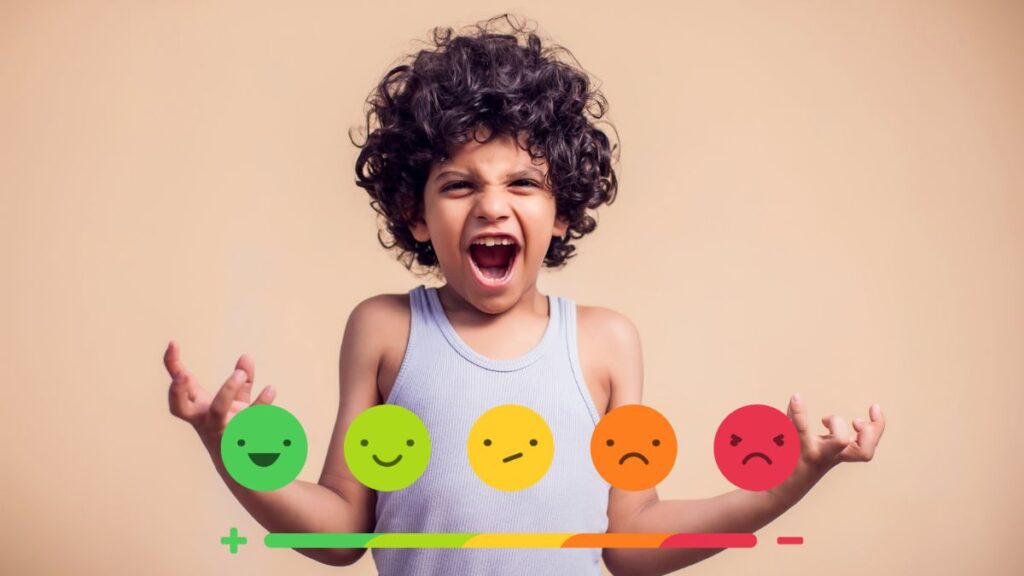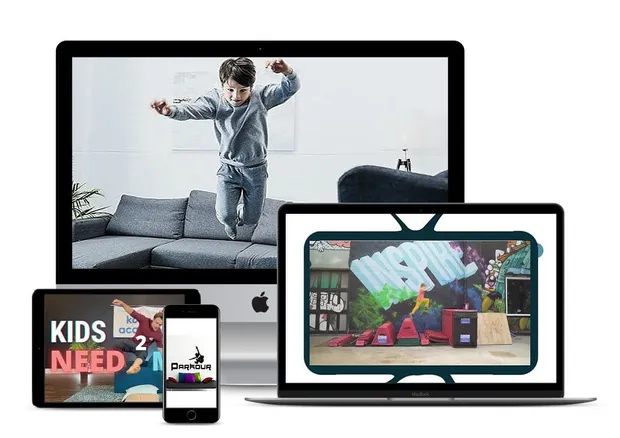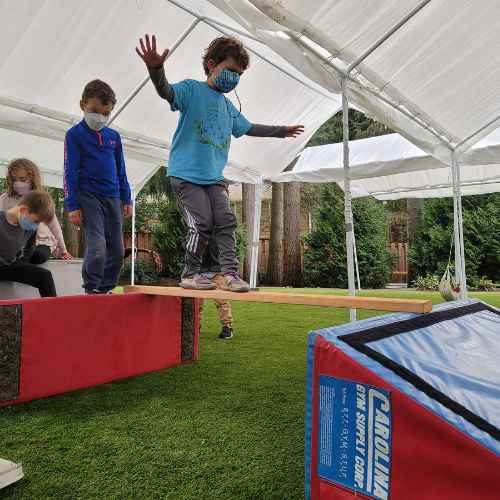
Labeling emotions is an important skill for children to develop, and among them, anger can be particularly challenging for young minds to navigate. If left unaddressed, it can lead to behavioral issues, and affect academic performance.
Teaching children to use an “anger thermometer” is an effective strategy that helps them identify and regulate their feelings. This tool uses a simple, visual scale to help kids gauge the intensity of their anger, fostering emotional awareness and self-control.
The anger thermometer is not just a method for tracking emotions; it serves as a foundation for broader emotional intelligence. By learning to recognize different levels of anger, children can develop coping strategies tailored to their needs at each intensity level. This early intervention can prevent frustrations from escalating into aggressive behavior.
And the great thing is that once you know how to create an anger thermometer, you can adapt the model to any emotions your kids are dealing with. Read over the instructions below and then consider adapting it to sadness or fear when needed.
Below you’ll find how an anger thermometer works, its benefits, components, and practical tips for parents and educators to help kids with their feelings in a more kind, considerate and informative way.
Understanding an Anger Thermometer
An anger thermometer is a visual tool designed to help children articulate the intensity of their anger. Typically represented as a thermometer with a scale from 1 to 10, it provides a clear and straightforward way for children to express how they are feeling.
The anger scale includes different colors and descriptive words for each range to make it more relatable and understandable. For example, the lower end of the scale (1-3) might be green and labeled with words like “calm”. The middle range (4-6) could be yellow and associated with terms such as “frustrated”. The higher end (7-10) would be red, indicating more intense feelings like “angry”.
Using an anger feelings thermometer involves teaching children to pause and assess their feelings when they start to notice signs of anger. This self-awareness helps them determine early anger warning signs before it escalates. Children learn to associate physical sensations and emotional cues with different levels on the thermometer, making it easier for them to communicate their feelings.
Remember, the anger thermometer serves as both a preventive and responsive tool. It encourages children to take proactive steps to calm down when they notice their anger rising, such as taking deep breaths, counting to ten, or seeking a quiet space.
Components of an Anger Thermometer
An anger thermometer is composed of several key components, each designed to facilitate a child’s social awareness and understanding of their emotions. These components make the tool accessible, relatable, and effective in helping children control their feelings.
1. Visual Scale
The core of the anger thermometer is a visual scale, often resembling a traditional thermometer. This scale typically ranges from 1 to 10, representing increasing levels of anger.
2. Color Coding
Colors play a significant role in making the anger thermometer intuitive. Common color schemes include:
Green (1-3)
Represents low levels of anger or calmness, signaling that the child is relaxed or mildly irritated.
Yellow (4-6)
Indicates moderate anger, such as feeling frustrated. It serves as a caution zone, where intervention can prevent escalation.
Red (7-10)
Denotes high levels of anger, where the child is very upset or furious. This range signals a need for immediate coping strategies to manage intense emotions.
3. Descriptive Labels
Each level on the scale is often accompanied by descriptive words that correspond to the intensity of the emotion. These labels provide context and help children match their feelings with the appropriate level.
1-3 (Green): “Calm,” “Okay,” “Slightly Annoyed”
4-6 (Yellow): “Frustrated,” “Irritated,” “Upset”
7-10 (Red): “Angry,” “Very Upset,” “Furious”
4. Coping Strategies
An effective anger thermometer includes suggested coping strategies for each level. These strategies provide children with practical steps they can take to manage their anger. Examples might be:
Level 2 (Green): “Take deep breaths, think positive thoughts”
Level 5 (Yellow): “Count to ten, talk to a friend, take a break”
Level 9 (Red): “Find a quiet space, use a stress ball, seek adult help”
Together, these components create a comprehensive tool that helps children understand their feelings while managing them in a supportive way.
Steps to Teach Kids to Use the Anger Thermometer
Introducing the Concept
The first step in teaching kids to use an anger thermometer is introducing the concept in a simple, engaging manner. Begin by explaining that everyone experiences anger and that it’s a normal emotion. Emphasize that the goal is to understand and manage anger, not eliminate it.
Use stories or visual aids to illustrate how recognizing different levels of anger can help them stay calm and make better decisions.
Creating a Personal Anger Thermometer
Next, involve the child in creating their own personal anger thermometer. Guide the child in drawing a thermometer and dividing it into sections, marked from 1 to 10 and assign colors to each section, with green at the bottom, yellow in the middle, and red at the top.
Allow the child to add their own descriptive labels for each level, using words that resonate with their experiences of anger.
Identifying and Labeling Feelings
Teach the child to identify and label their feelings. Start by discussing different scenarios that might trigger anger and how these situations make them feel. Encourage the child to think about physical sensations and emotional cues associated with each level of anger.
Role-playing can be a useful technique here, allowing the child to practice identifying their anger levels in various hypothetical situations.
Using the Thermometer in Real-Time
The final step is teaching the child to use the anger thermometer in real-time situations. Encourage them to assess their feelings when they start to feel angry. Ask them to point to the level on the thermometer that matches their current emotion and reinforce the importance of using coping strategies suitable for their level of anger.
Benefits of Using an Anger Thermometer
Emotional Awareness
One of the primary benefits of using an anger thermometer is the development of emotional awareness. Children often struggle to understand their emotions, particularly complex ones like anger.
The anger thermometer provides a visual and structured way for children to gauge their feelings. This increased awareness helps them recognize early signs of anger, allowing for timely intervention before their emotions escalate.
Self-Regulation Skills
Self-regulation involves the ability to manage one’s emotions and behaviors in various situations. This process encourages them to reflect, and choose constructive actions rather than reacting impulsively, and techniques such as deep breathing become second nature.
As children practice these strategies, they build resilience and gain confidence in their ability to handle challenging emotions, leading to improved self-control and emotional stability.
Improved Communication
Children often find it difficult to control their feelings, especially when they are overwhelmed by anger. The anger thermometer provides a common language for expressing emotions, making it easier for children to communicate their needs and feelings to others. This improved communication helps caregivers, teachers, and peers understand the child’s emotional state and respond appropriately.
Reduced Outbursts
Regular use of an anger thermometer can significantly reduce the frequency and intensity of emotional outbursts. By recognizing their anger early and employing coping strategies, children can prevent minor irritations from escalating into major tantrums.
Tips for Parents and Educators
Consistency is Key
Consistency is crucial when teaching children to use an anger thermometer. Know that regular and repeated use of the thermometer helps children internalize the process of managing their emotions.
Therefore, integrate the anger thermometer into their daily routine and discuss their feelings frequently. Also, set clear expectations and follow through with consistent support and guidance, so children know that using the thermometer is an ongoing part of their anger management toolkit.
Modeling Behavior
Children learn a great deal from observing the adults around them. Demonstrate how to use an anger thermometer by sharing your own experiences with managing anger. By modeling behavior, you show children that it’s normal to feel angry and that effective strategies exist for managing those feelings.
Positive Reinforcement
Positive reinforcement is essential in encouraging children to use the anger thermometer effectively. Acknowledge and praise children when they successfully identify their anger level through positive reinforcement, such as verbal praise, a reward system, or additional privileges. This encouragement reinforces the behavior and makes children more likely to use the thermometer consistently.
Creating a Supportive Environment
Creating a supportive environment is vital for the successful implementation of an anger thermometer. Provide a calm and stable environment where children can practice using their anger thermometer without fear of judgment or punishment.
Moreover, encourage open discussions about feelings and validate their experiences while avoiding punitive responses to anger; instead, focus on understanding and guiding the child toward better emotional management.
Encouragement to Implement
Encouragement is key to helping children implement the anger thermometer in real-life scenarios. Remind them to use the thermometer when you notice signs of rising anger and encourage them to apply the coping strategies they’ve learned.
Over time, these reminders will help them develop the habit of self-monitoring.
Teaching children to use an anger thermometer is a practical approach to fostering emotional intelligence and self-regulation. This simple yet effective tool helps children understand their feelings, enabling them to manage their anger constructively.
By integrating the anger thermometer into daily routines and consistently reinforcing its use, parents and educators can support children in developing essential emotional skills.
GET Access to the ULTIMATE PLAY DATE PACKAGE (Value: $49) for FREE!


7-Day Crystal Shard Adventure
Unleash your child’s potential with our 7-day crystal shard movement adventure!


